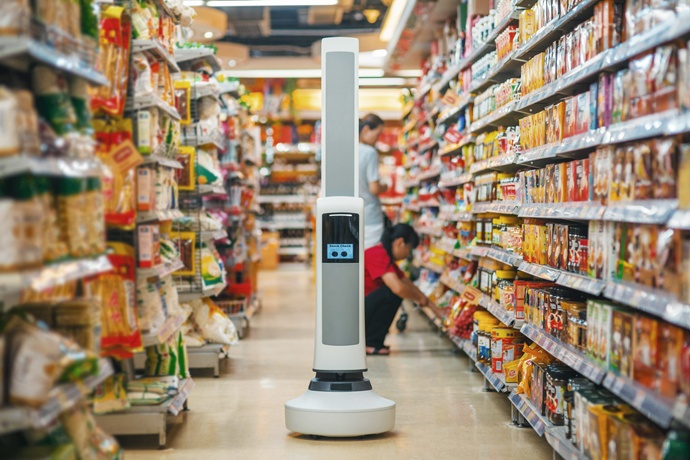Key Takeaways:
- A new Federal Reserve governor, Stephen Miran, downplayed recent grocery price spikes.
- Americans just saw their biggest jump in grocery prices in nearly three years.
- Experts link higher food costs to Trump’s tariffs and stricter border policies.
- Despite economic jargon, many families feel real pain at the checkout line.
In a recent interview on a major business network, Federal Reserve governor Stephen Miran said the rising costs of bananas, coffee, and tomatoes simply reflect “relative price changes.” His comment came as Americans faced their steepest grocery inflation in almost three years. Yet shoppers across the country report empty shelves and higher bills, fueling stress for over half of U.S. households.
Why grocery inflation matters to you
Last month brought the largest grocery inflation jump since 2022. For example, coffee prices jumped by nearly 21 percent year over year. Uncooked beef steaks rose by 16.6 percent. Even staples like apples and bananas climbed by 9.6 and 6.6 percent. While overall fruit and vegetable prices rose more modestly, these spikes hit hard at dinner tables.
Moreover, a major survey found Americans now worry more about food costs than rent, health care, or student loans. In fact, many families say they skip meals or choose cheaper, less healthy options to cope. Therefore, grocery inflation is not just a chart trend. It directly affects how people eat and feel.
What Miran really meant by “relative price changes”
Economists use the term “relative price changes” to explain how some products become pricier while others stay steady or fall in cost. In other words, it’s normal for prices of certain goods to move up or down. However, Miran also said that only “macroeconomically significant” inflation should guide Fed policy. By that, he meant small shifts in food prices may not force interest-rate hikes.
Yet, for many Americans, any rise at the grocery store feels significant. When milk or bread costs more, families adjust budgets. They may cut back on other essentials or go into credit card debt. So although the Fed might focus on broad inflation measures, grocery inflation still stings.
How tariffs and border policies push prices higher
Several factors drive today’s grocery inflation. First, new tariffs on imports like coffee beans and bananas make overseas goods cost more. Second, stricter border rules can cut back on farm workers and food processors. Consequently, labor shortages raise production costs. Those extra costs then pass to consumers at the checkout line.
In addition, supply chain snags still linger after global disruptions. Trucking delays and higher fuel prices add to grocery inflation too. Taken together, these forces create a perfect storm that makes it tough for families to keep food on the table.
What could happen next
Although Governor Miran expects these price shifts to remain manageable, other experts sound the alarm. If tariffs stay in place or expand, import costs could climb further. Meanwhile, if border policies continue to limit labor, domestic food production might fall. That scenario could push grocery inflation even higher, forcing more households to scramble.
On the policy front, the Fed could change interest rates if overall inflation stays elevated. Higher rates might cool demand, but they also raise borrowing costs for businesses and families. Thus, central bankers face tough choices. They must balance broader economic health with the daily struggles of shoppers.
How to cope with rising grocery prices
Even if policies shift slowly, households can act now. Below are a few practical tips:
• Plan meals in advance to reduce impulse buys.
• Compare unit prices to get the best deals.
• Buy seasonal produce when it’s cheaper.
• Use coupons and store loyalty programs.
• Consider bulk purchases for nonperishables.
• Shop at discount or wholesale clubs if possible.
By tracking prices and sticking to a list, families can limit the impact of grocery inflation on their budgets.
Looking ahead
While a Fed governor may view price hikes as mere “relative changes,” millions of Americans know grocery inflation all too well. As food costs climb, families feel the squeeze. Yet they also find ways to adapt, from clipping coupons to picking seasonal foods. In the end, whether economic jargon shifts or not, real people will keep a close eye on grocery bills.
Frequently Asked Questions
What is grocery inflation?
Grocery inflation measures how much more Americans pay for food at stores compared to past months or years. It tracks price changes for items like meat, produce, and packaged goods.
How do tariffs affect grocery costs?
Tariffs are taxes on imported goods. When the government adds tariffs to items like coffee or bananas, sellers often raise prices to cover the extra cost, making groceries more expensive.
Will stricter border rules raise food prices?
Yes. Stricter border rules can reduce the number of workers allowed to pick and process food. With fewer workers, farms and factories pay more, and those costs pass to consumers.
Can I fight grocery inflation with budgeting?
Absolutely. Creating a meal plan, comparing unit prices, and using loyalty programs or coupons can help families stretch their food budget despite rising prices.

